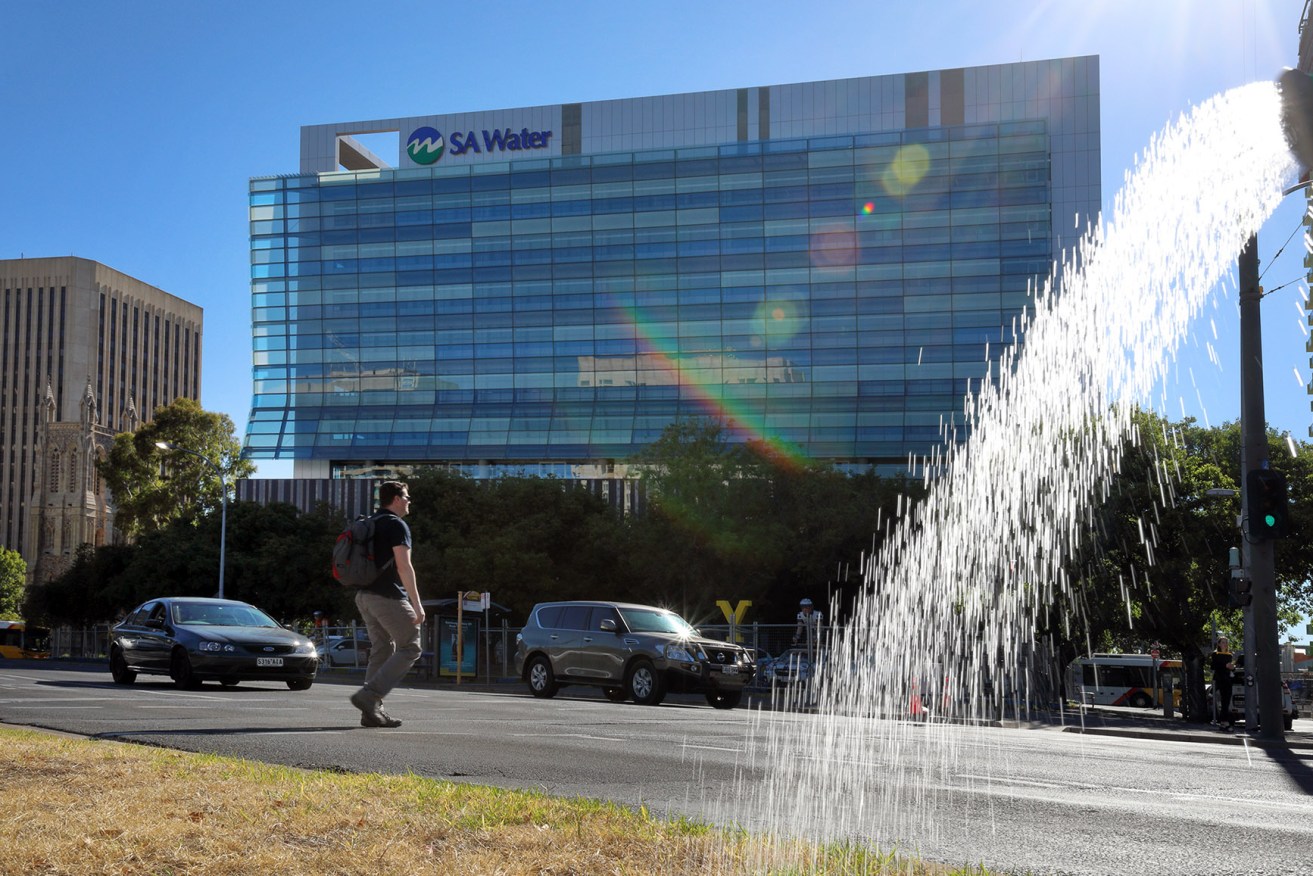Lucas bracing for “increased exposure” to SA Water’s fortunes
The Marshall Government is set to pursue new “savings or revenue measures” to make up for a higher-than-expected shortfall in SA Water dividends from next year, as the state’s Auditor-General warns the budget faces “increased exposure” to the utility’s operations.

Photo: Tony Lewis / InDaily
Within four years, SA Water is projected to provide more than three quarters of the Government’s total budgeted dividend and income tax equivalent income, according to Auditor-General Andrew Richardson’s annual report tabled last week.
Richardson, who will face questions from parliament’s Economic and Finance Committee today, says SA Water “is expected to become the state’s main source of dividend and income tax equivalent income over the forward estimates, with its share of the total increasing from 33 per cent in 2017‐18 to 76 per cent in 2022‐23”.
“As a result,” he writes, “the SA Government will have increased exposure to SA Water operations in meeting its budgeted outcomes”.
Those income streams to Treasury have dropped off with the winding down of proceeds from the Motor Accident Commission privatisation.
But SA Water’s own bottom line is also set to take a hit with an expected devaluation of its regulated asset base, after an independent inquiry found it had been significantly overvalued by the previous Labor government over several years, as InDaily revealed in January.
The asset valuation is factored into the Essential Services Commission’s water price determination, with former ESCOSA commissioner Lew Owens finding in his final report that the utility should be valued no higher than $7.25 billion, rather than the current $7.77 billion.
Treasurer Rob Lucas said a new valuation was due by June next year, maintaining it would be reduced in line with Owens’ recommendations.
“It’s quite clear there will be a benefit for customers, who will have lower water costs but the State Government will have less dividends,” he said.
There is “some provision” in the budget “for reduced income for SA Water”, he said, but “whether or not that’s sufficient or we’ll have to make a bigger provision is a decision we’ll have to make in next year’s budget”.
The price consumers pay for water will be determined partly by the Government’s revised valuation, but also on ESCOSA’s determination of the utility’s cost of capital.
Lucas believes “both of those are likely to place downward pressure on prices – but also downward pressure on revenues to government by way of dividends”.
“We’ve made some provision but it’s my view that won’t be enough,” he added.
If that is the case, he noted, the shortfall would have to be addressed in next year’s budget through new “savings or revenue measures”.
It’s another looming headache for Lucas as he grappled with a shock GST writedown, which has already led him into conflict with the Liberal heartland over his decision to toughen up land tax aggregation measures, reaping an extra $86 million a year from next year.
The Auditor-General also flags ongoing issues with meeting targeted voluntary separation package benchmarks.
A TVSP scheme introduced by Labor in 2010 remains open, with $170 million budgeted in 2018‐19 “to help agencies meet TVSP and separation costs associated with workforce reductions”.
Treasury advised that 1554 TVSPs and executive separations – the equivalent of 1431 full-time equivalent jobs – were accepted that year, costing $131 million – $39 million less than budgeted – forcing Lucas to roll over the scheme into the current year.
“The less than budgeted take‐up of the TVSP scheme in 2018‐19 and extension of the scheme into 2019‐20 increases the risk that FTE and employee expense reductions may not be sufficient to achieve the budgeted reduction in employee expenses between 2018‐19 and 2019‐20,” Richardson warned.
Lucas acknowledged there had been “inevitable delays” in department heads identifying “who they believe were surplus to their requirements”, but emphasised “reductions in public service numbers don’t have to be achieved by TVSPs”.
He said departments can reduce numbers by not filling vacancies or natural attrition, adding “if agencies can achieve savings other than through FTE reductions, we don’t have a concern with that”.
FTEs in the public sector grew from 84,951 in 2018-19 to an estimated 85,142 this year, which Lucas says is a significantly smaller increase than the average growth of 1780 under the last two years of Labor.
“We’ve stopped that massive increase in the numbers, but haven’t achieved the reduction we’d set out to achieve,” he said.
But Labor’s Shadow Treasurer Stephen Mullighan points to the fact the current figure is almost 1000 more than the 84,118 predicted in the previous year’s budget.
“The purpose of funding those $130 million worth of TVSPs has been blown out of the water by the fact they’ve simply continued to recruit, and they’ve still ended up with 1000 more FTEs than they budgeted for,” he said.
Want to comment?
Send us an email, making it clear which story you’re commenting on and including your full name (required for publication) and phone number (only for verification purposes). Please put “Reader views” in the subject.
We’ll publish the best comments in a regular “Reader Views” post. Your comments can be brief, or we can accept up to 350 words, or thereabouts.
InDaily has changed the way we receive comments. Go here for an explanation.




